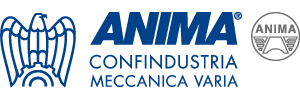Check out our Industrial terms glossary
Packaging
Materials used for the containment, protection, handling, delivery and presentation of goods.
Packaging (or packing)
Material used to contain and protect certain goods, from raw materials to finished products in order to enable them to be handled and delivered from the producer to the consumer, including disposable items used for the same purpose.
Packing list
A list that indicates the contents of a container.
Pallet
Platform, usually made of wood, on which packages are stacked to facilitate the loading, unloading and storage of goods. It can be two-way or four-way, depending on whether it can be lifted by the forks of special lifting machinery on just two or all four sides. Sizes typically range from 1 x 0.80 m (the official Europallets) to 1 m x 1.20 m (ISO pallet).
Pallet Cage
Metal structure consisting of a base and two framed uprights, which is applied to the pallets to ensure better stability for the load during picking and shipping.
Pallet truck
In-house handling vehicle with or without electric motor, which can transport one or two caged pallets or two or three roll containers, depending on whether it�s equipped with a �short fork� or a �long fork�.
Parcel
First level of load units or in other words separate packages or packaging units of one or more items.
Parts List
The list of parts that make up a product or assembly.
Paternoster
Vertical storage system or carousel with rotating shelves for storage and intensive filing with shelving that slides vertical along an internal guide.
Peripheral Warehouse
Storage units located within the distribution network between the central warehouses and points of sale. They are characterized by the presence of safety supply of stock which can be used to meet the demand of end customers in their geographic area.
Perpetual inventory system
An inventory control system where a running record registers the available quantity of each item.
PGTL
General Plan of Transport and Logistics
Phygital Supply Chain
“Phygital” is a neologism which derives from merging the terms “Physical” and “Digital”. In logistics, it describes the perfect integration of the physical flow of materials and the digital flow of information along the entire purchasing and supply chain. The transformation of the Supply Chain in a “Phygital” key favours collaboration and communication between all the players in complex logistics chains.
Physical allocation of the ULDs
See Dedicated Zones, Picking Zones, Dedicated and Shared Positions.
Physical distribution management
The planning, execution and control of activities related to the flow of materials, from the end of production to delivery to customers.
Picking
Physical preparation of an order.
Picking
The process of taking items from stocks of finished products to be shipped to the customer, or taking components to manufacture products.
Picking List
List of packages of goods that are required to prepare an order.
Piggyback
The transport of loaded semi-trailers on railway wagons (combined road-rail).
Piggyback transport
The transport by rail of a suitably adapted semi-trailer on a special wagon called a “pocket wagon”
Planner
It is responsible for managing the stock of one or multiple Distribution Centres and responds to the relative level and service in the points of sale, in compliance with parameters set by the budget
Platform
Area where goods pass through to be organized for delivery. Here it’s possible to change the carrier, the size of the exchange unit or add tangible or in tangible services. There is no stock on the platform, the role of this area is to allow for groupage and degroupage operations.
Point of sale (POS)
Physical, logical or virtual location where a consumer can purchase a product or a service; Structure for the distribution of food or non-food products to the public, usually located inside, on the edge or outside of built-up areas.
Pop Up Store
These are short-term stores which come into existence over a given period of time and usually emerge without much prior notification. They attract crowds and then either disappear or turn into a different type of store.
Postponement principle
The principle of deferral. Inserting a decoupling point as deep as possible inside the production cycle, separating management according to forecast and management according to orders. In this way it becomes possible to differentiate the products as much as possible in order to be able to reduce delivery lead times.
PPE
Personal Protective Equipment
Primary packaging
Packaging designed to be a sales unit for the end customer or consumer. Possible examples are boxes, cases, bags, blisters, cans, bottles, flasks, jars, tins and kegs.
Pro forma invoice
An invoice, issued by the supplier of a shipment, which informs the buyer about the kinds and quantities of goods to be sent and specifies their value and characteristics (weight, size etc.)
Procurement
The process of obtaining goods, services or functions from a supplier in the correct quantity and quality.
Production lead time
The time required to produce an item from the moment the order is received until the item is available for packaging.
Productivity
A number of operations of a certain kind, for example the picking of individual packages, carried out by employees over a specific unit of time, usually an hour. The unit of measurement in this case would be [packages / hour * employee].
Program Evaluation and Review Technique (PERT)
Economic-mathematical and graphic technique of linear programming (operational research) which is used for the programming of industrial production in the execution phase. It is based on the identification of the critical activities which helps to define the minimum and maximum times within which the required activities can be carried out. The network diagram highlights phases that are linked to constraints (time restrictions) and phases that allow saving in terms of time. The concepts of critical and grid paths are used (see CPM).
Pull Strategy
Management logic of the supply chain in which the product is pulled along the distribution channel by emerging demand. Production is governed by the final demand seen in the distribution process, so the entry of raw materials is not anticipated with respect to the orders.
Pull system
System in which the customer requests the supply of goods according to their stock level and the demand they are experiencing.
Purchasing lead time
The length of time between the decision to purchase an item and when it actually comes into stock.
Push Strategy
Management logic of the supply chain in which the product is pushed along the production-distribution channel according to requirements. The progress of the production is regulated according to the forecast of requirements in the distribution system and the synchronization of growing activities.


